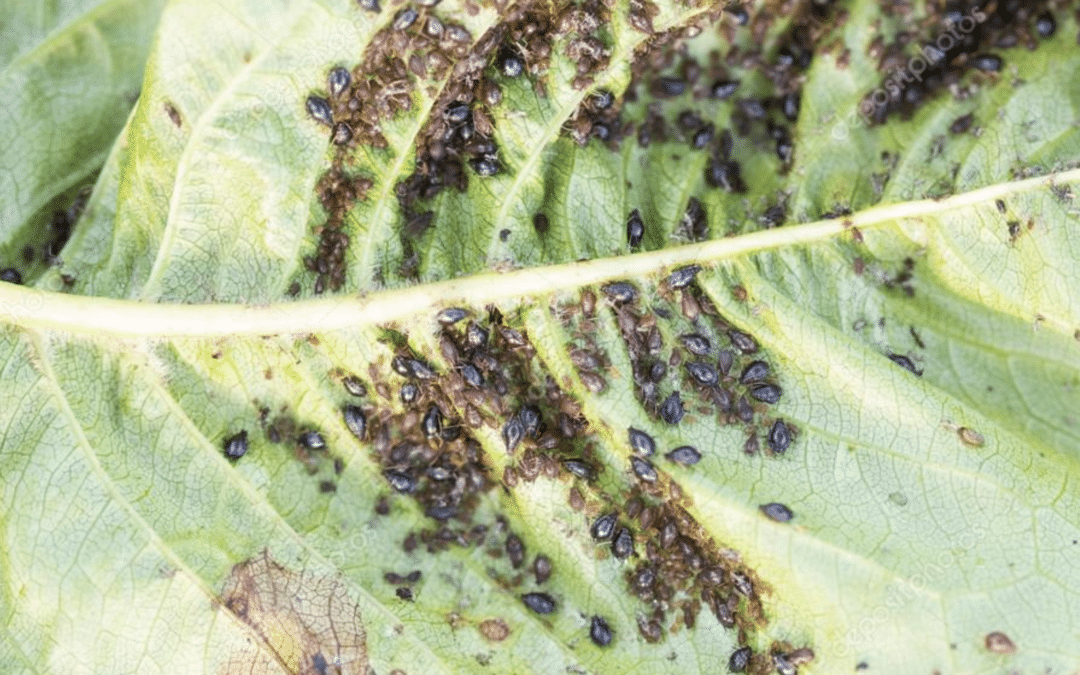There are many pests which gardeners have to deal with, but one of the most prevalent is the lowly aphid. These tiny insects can cause big trouble for vegetation. If you have seen damage to your trees or plants, you just might have an aphid infestation.
How to Identify an Aphid
There are more than 4,000 different types of aphids of which more than 250 are commonly found in yards. Aphids vary widely in color, size and even appearance, but they all feed on the sap of vegetation and can cause severe injury or wind up killing a plant and trees. Aphids vary widely in color, size and even general appearance, but most are under a quarter-inch in size and can be challenging to spot. Some alternative names for aphids you may be more familiar with include ‘greenflies’ and ‘blackflies.’
Types of Aphid Damage to Lookout For
Unless you are examining your plants and trees carefully, there is a good chance you will see signs of an aphid infestation before you notice any of the little critters in your garden. A few of the most obvious clues to look out for include:
- Yellow, curled, or damaged leaves. This is often one of the first indications of aphids, and it is definitely worth taking a closer look. Be sure to carefully examine the underside of leaves and those areas hidden from direct sunlight. These are the favorite places for aphids to hang out.
- Sticky liquid on the stems and leaves of plants. Aphids excrete this substance as a waste product, and it has a tendency to attract other destructive insects, especially ants. This aphid secretion is sometimes called ‘honeydew’ by gardeners due to its resemblance to honey along with its high sugar content.
- Patches of black fungus on leaves, stems or branches. This infection is called Sooty Mold and results from the waste of the aphids. Many people describe sooty mold as looking similar to ash. While sooty mold doesn’t cause damage to plants, besides looking unattractive, it does indicate an aphid presence.
How to Get Rid of Aphids
Have you noticed aphids on your plants? Getting rid of them can be difficult, but many landscapers have a few secrets when it comes to dealing with these uninvited guests:
- Recruit your own insect army. If possible, it is better for you and the environment to take a natural approach to controlling aphids. One way of doing this is by attracting the insects which enjoy feasting on them. Flowers like sunflowers, cosmos, and tickweed, along with herbs such as parsley and coriander are favorite environments for predators such as ladybugs, parasitic wasps, and greenlace wings.
- No time for insects, but still want to go the natural route; no problem. Try spraying aphids with cold water. Sometimes all it takes a good washing to eliminate the problem. This method can offer immediate but not always long-lasting results. If just water isn’t doing the trick, try adding a bit of biodegradable soap to the water before spraying. Some other traditional remedies for aphids include applying flour to plants or washing plants with Neem oil.
- Give diatomaceous earth a try. Diatomaceous earth, often just called ‘DE,’ is made from fossilized phytoplankton. DE is commonly used as an ecological way to kill bugs. Be careful if you decide to use DE since it can kill beneficial insects and damage flowers.
Why not leave aphid control to the experts? Green Acres Landscape has been helping Mid-Valley residents love the way their yards look for over 25 years. When it comes to environmentally friendly landscaping Green Acres Landscape has you covered! Call 503-399-8066 to schedule a visit today!

